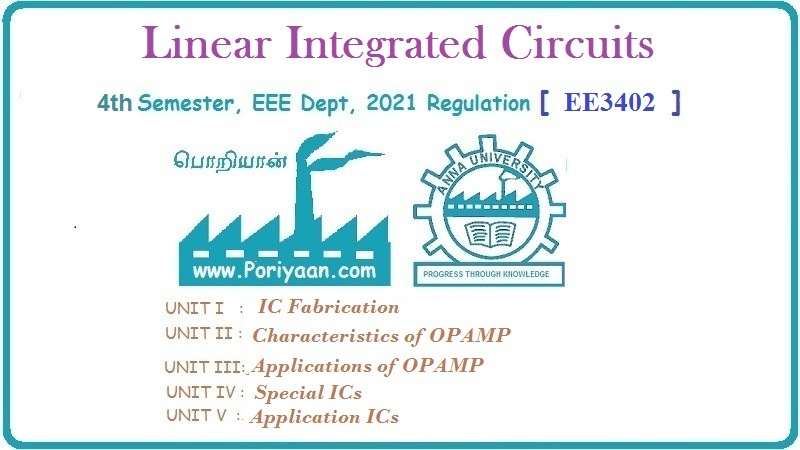Linear Integrated Circuits: Unit I: IC Fabrication
Classification of integrated circuits
Depending upon the functional utility, the integrated circuits are classified as linear ICs and digital ICs. From the point of view of structural considerations, ICs can be divided as monolithic ICs, thick-thin film ICs and hybrid ICs.
Classification of integrated circuits
Depending
upon the functional utility, the integrated circuits are classified as linear
ICs and digital ICs. From the point of view of structural considerations, ICs
can be divided as monolithic ICs, thick-thin film ICs and hybrid ICs. The
monolithic ICs are most common type of IC. In the monolithic ICs, all the
active and passive components alongwith their interconnections are manufactured
on a single silicon chip. In general, the monolithic ICs has power limitations
; hence they are preferred only in low power applications.
In
general, thick-thin film ICs are used to produce only the passive elements. The
film technology is used to develop thick-thin film ICs. By combining the
passive elements with pre-fabricated active components. Generally the film
circuits are made by depositing various film capacitors and resistors on a
separate substrate such as glass or ceramic used as passive substrate. And then
the pre-fabricated active components are added into the substrate. The thick
film technology is easy and inexpensive. The thin film technology produces
components with greater presicion, but it is expensive as compared with the
other technology.
For
high power applications, hybrid ICs are used. Hybrid ICs combine two or more
monolithic ICs in one package. They may combine monolithic ICs with thick-thin
film circuits.
On
the basis of the active devices used, the ICs are classified as bipolar ICs and
unipolar ICs. The bipolar ICs use bipolar junction transistors (BJTs), while
the unipolar ICs use field effect transistors (FETs).
Depending
upon the isolation technique used, the bipolar ICs are further classified as
p-n junction isolation ICs and dielectric isolation ICs.
Depending
upon the type of FET used, the unipolar ICs are further classified as MOSFET
unipolar ICs and JFET unipolar ICs.
Table
1.2.1 gives the total information about the IC families on the basis of
substrate used, structure of IC, active and passive devices used and finally
the application of the IC.

Review Questions
1. Write short note on classification of integrated circuits.
2. Give comparison between the IC families on the basis of
structure, substrate used, active and passive devices and applications.
3. What are the new trends in Integrated circuit technologies
and explain about its scope for future generation ?
Linear Integrated Circuits: Unit I: IC Fabrication : Tag: : - Classification of integrated circuits
Related Topics
Related Subjects
Linear Integrated Circuits
EE3402 Lic Operational Amplifiers 4th Semester EEE Dept | 2021 Regulation | 4th Semester EEE Dept 2021 Regulation
